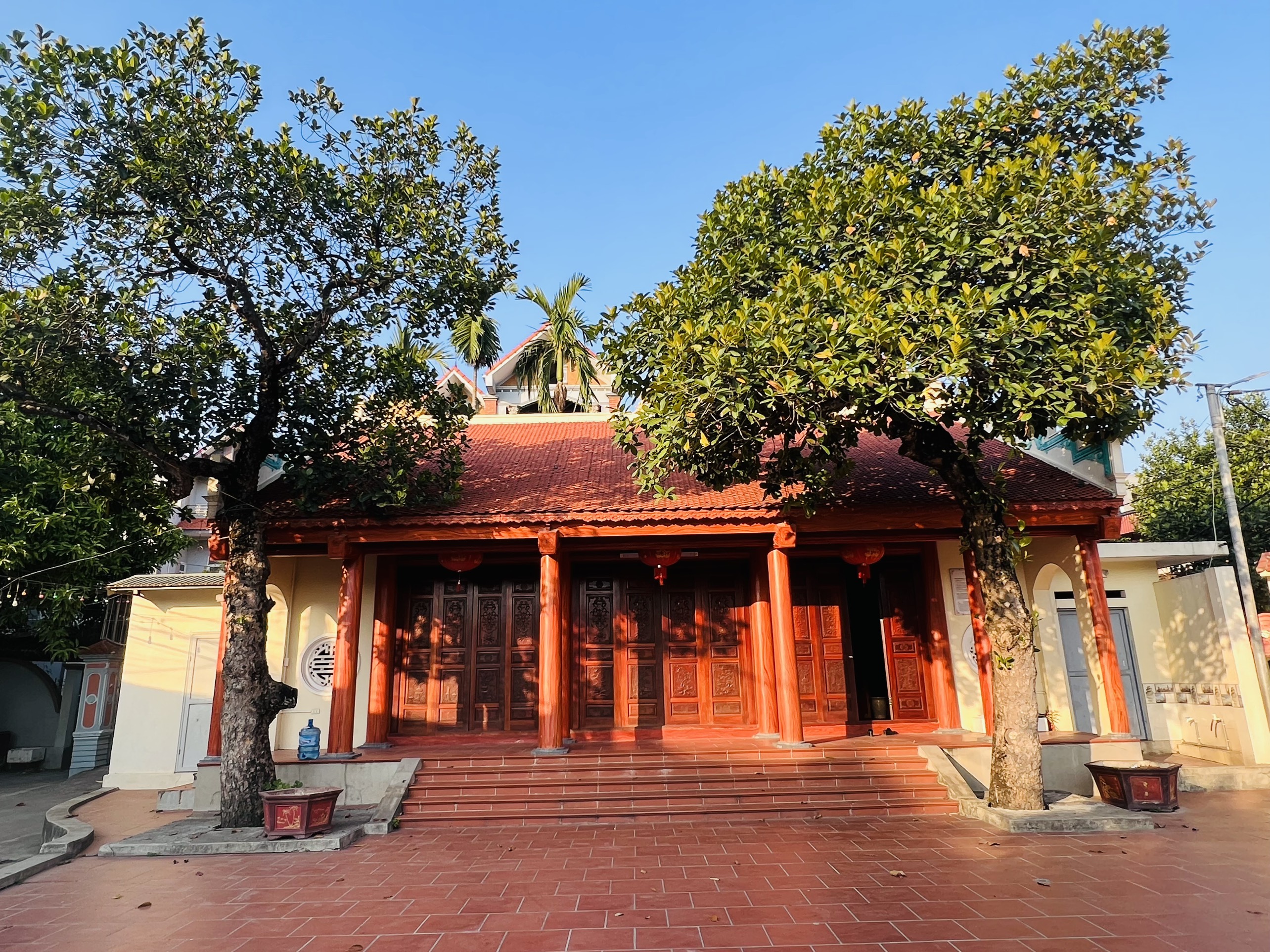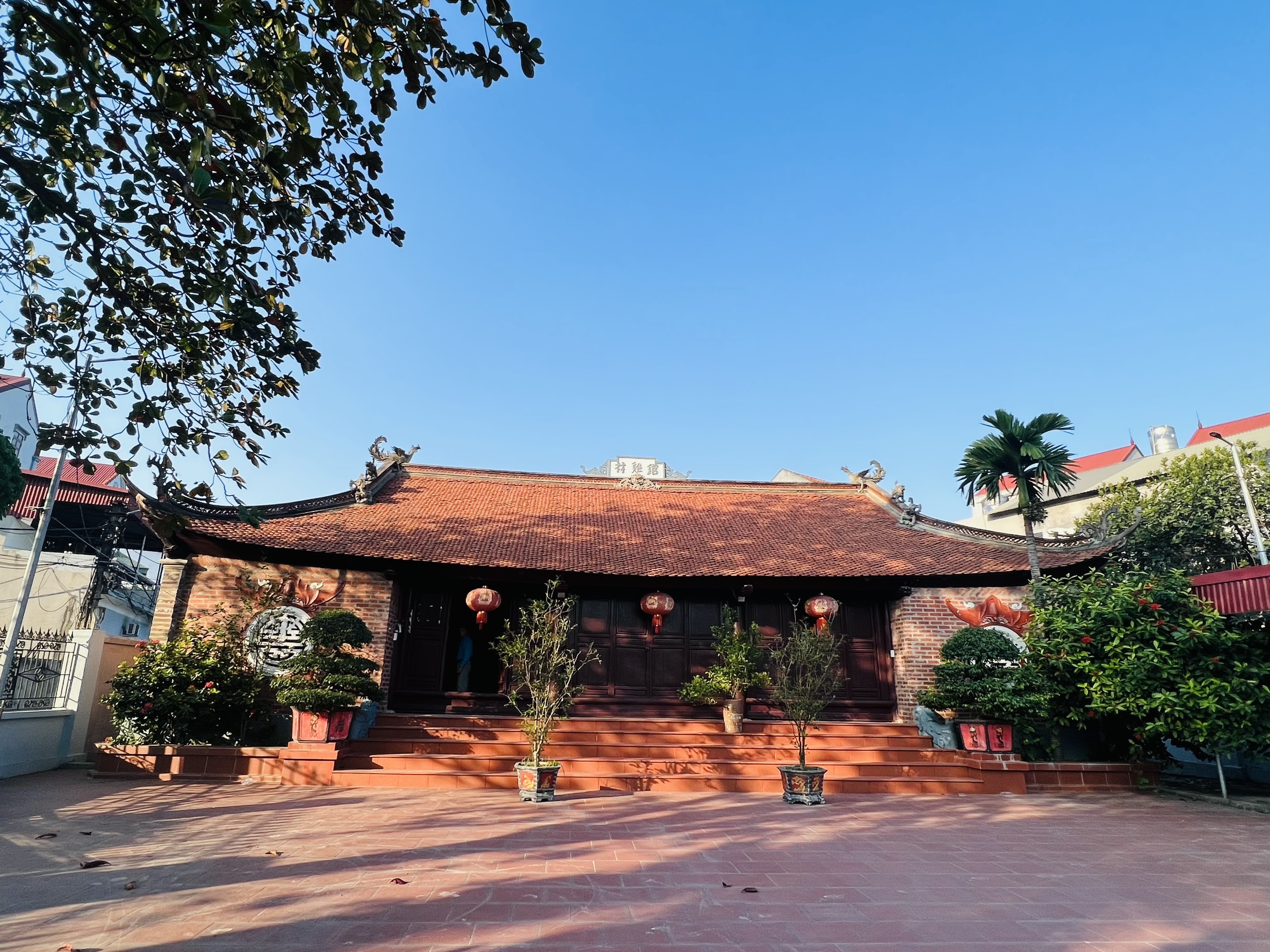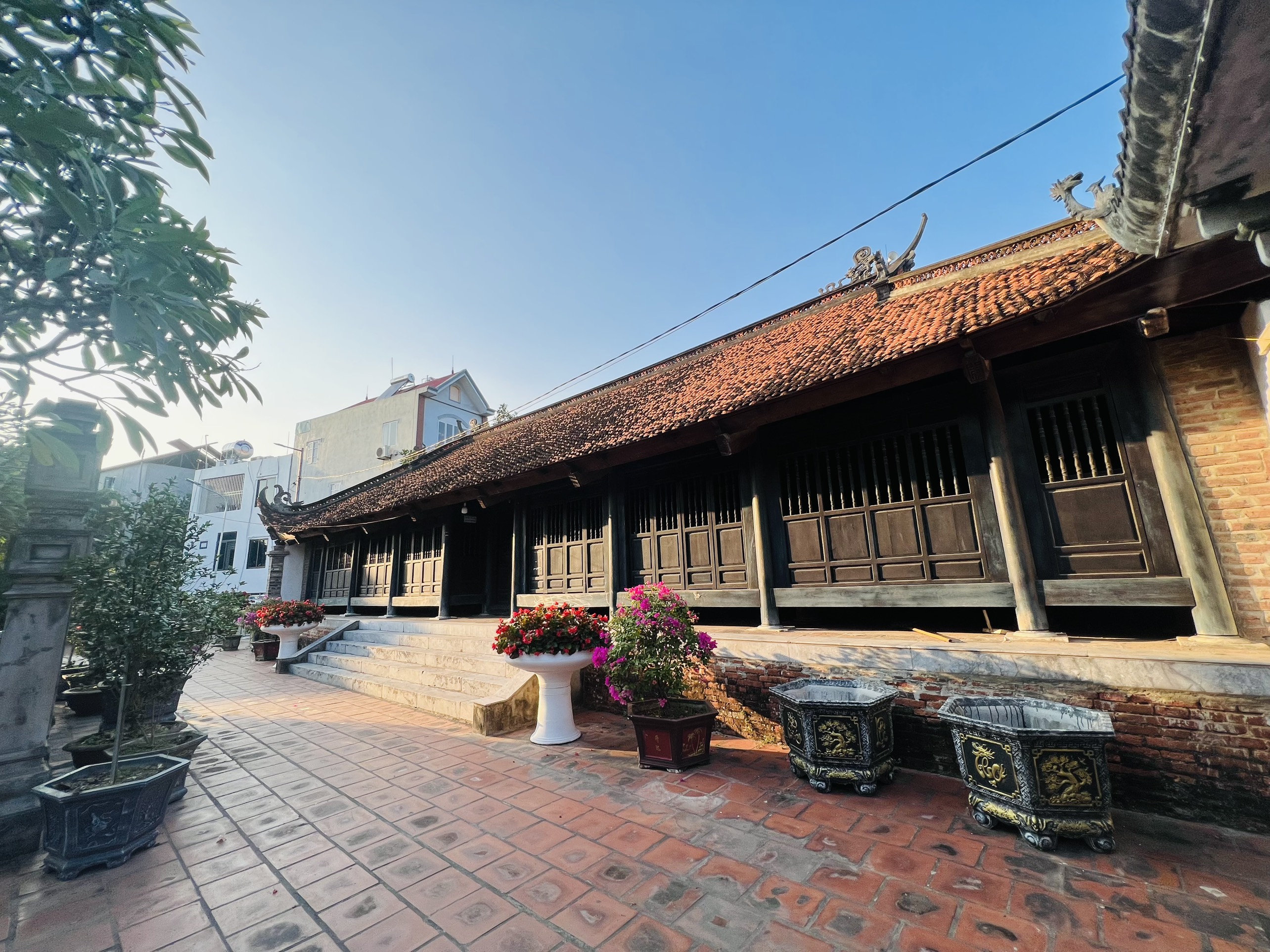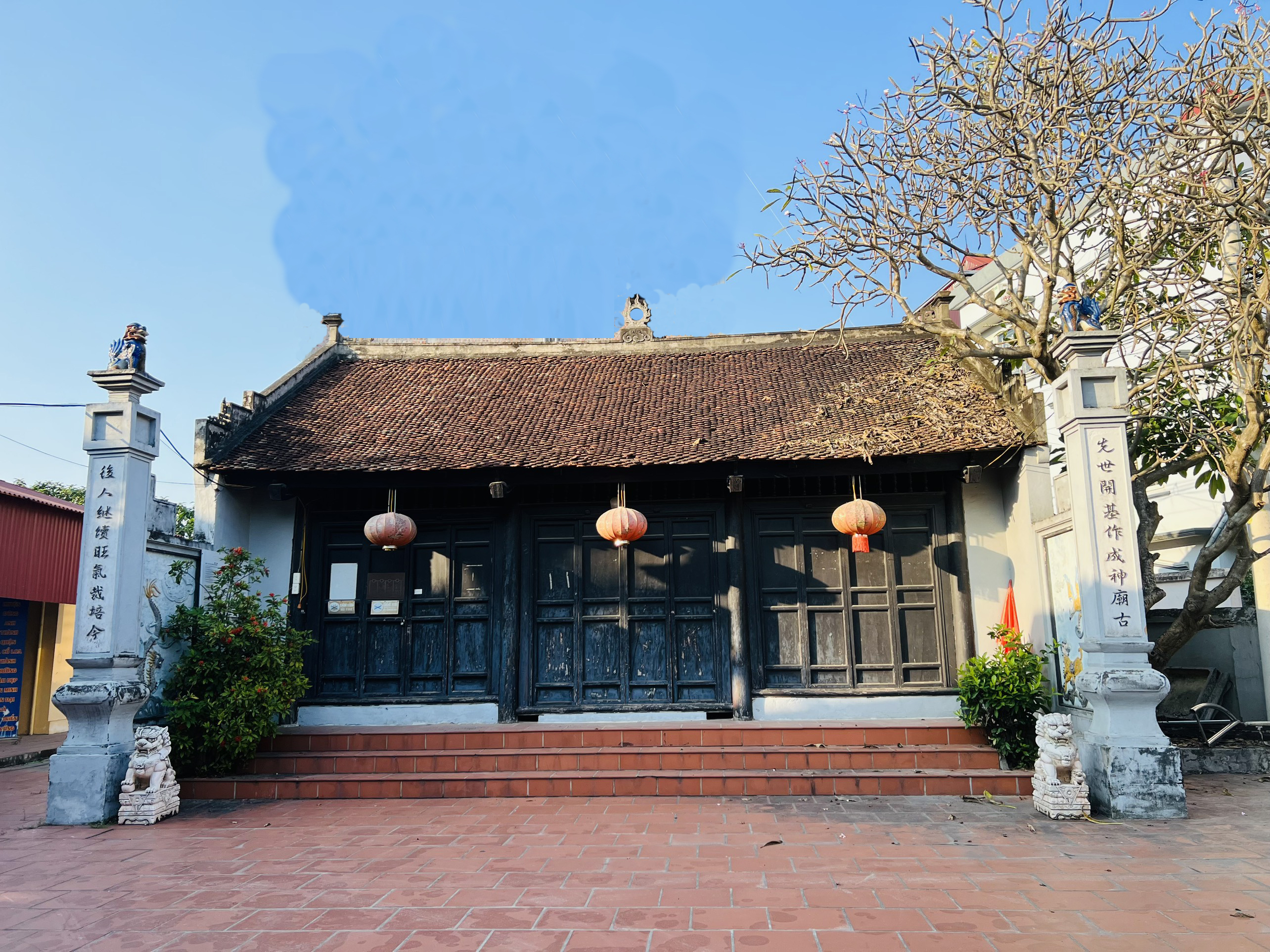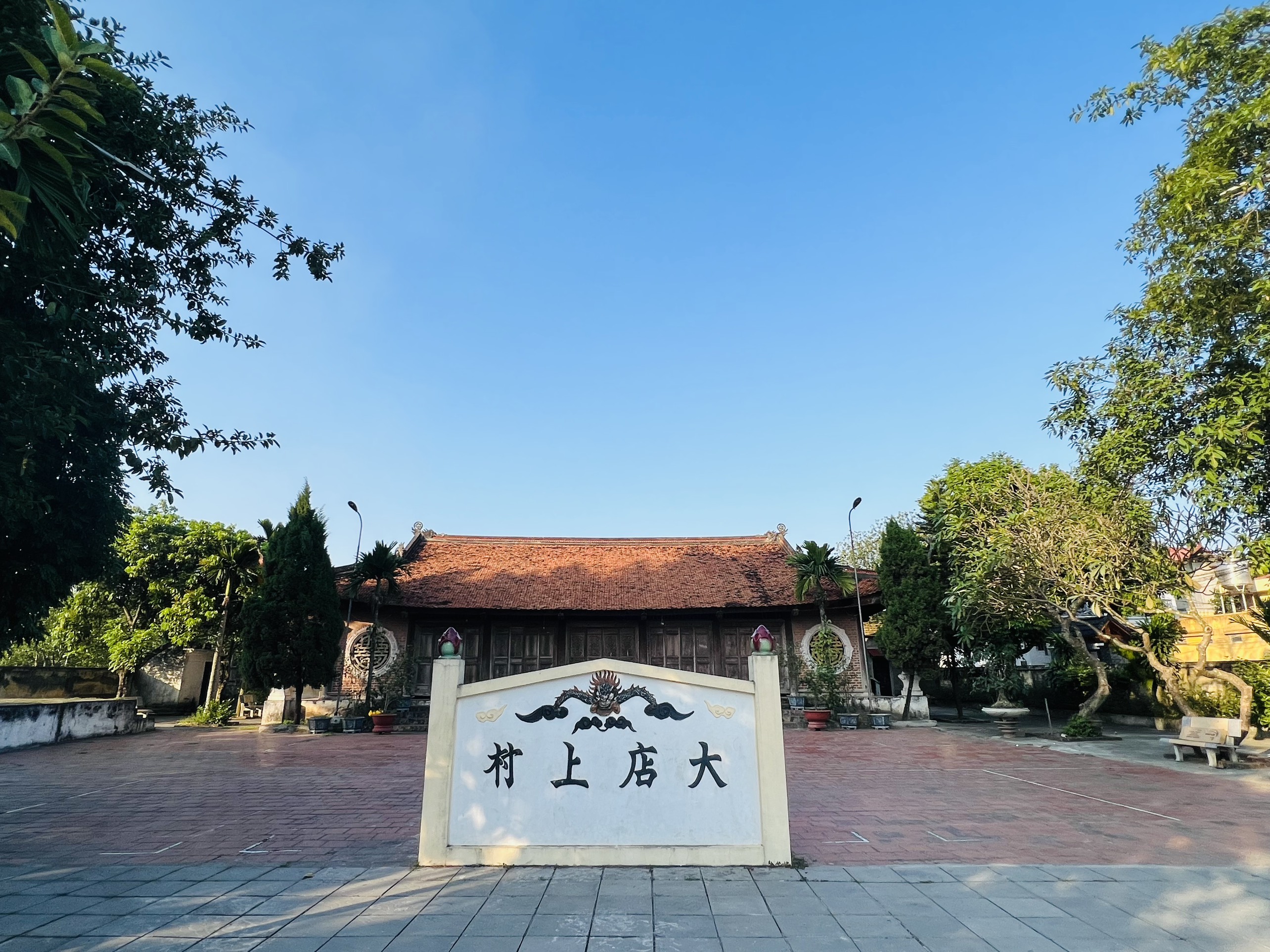Chùa hamlet is also known as Hậu Miếu hamlet, probably because it is located behind An Dương Vương Temple from a long time ago. “Điếm” was built next to the road to Ngự Triều Di Quy communal house, close to the south gate of the Internal rampart. This land is about 600m2 wide, located on the surface of the Internal rampart, at the beginning of the hamlet, in front of there is a lake - the vestige of the moat outside the ranpart, now almost all lost.
Chùa Hamlet Điếm
Overall, “điếm” has a Chinese word “丁” shaped layout consisting of Forecourt and the sanctuary, with an area of more than 100m2. In fact, Forecourt and the sanctuary are two parallel architectures with the shape of the Chinese word "二" (two), but recently they have been revised to extend the sanctuary and have a common wall.
This building faces the south, but the entrance is from the east, you have to go through a small gate, then the lower yard, from there to the upper yard adjacent to the 0.6m high floor, with steps extending to the front Forecourt.
The Forecourt is a wooden frame structure, roofed with “mũi hài” type (shoe-toe-shaped), decorated with clusters of clouds, flowers and leaves in the shape of dragon’s head wrapped close to the corners. Six sets of trusses of the wooden frame has divided the Forecourt into 5 equal compartments, surrounded by sealed wood, leaving only 3 front and one back compartments to make a passage with the "thượng song hạ bản" door set. The truss set here is made in the style of "con chồng, kẻ chuyền", the roof is divided into "thượng tứ, hạ ngũ” (upper four, lower five), with four rows of columns. There are still floor mortises on the wooden pillars of the side rooms, 0.6m above the floor of the house. It is the vestige of an ancient building.
The sanctuary is a small structure connected to the Forecourt in a nave with a wooden door. Inside, there is a brick pedestal to place the altar close to the wall of sanctuary.
The interior decoration of “điếm” is concentrated in the nave of the Forecourt with two horizontal lacquered board, in front of the incense altar there are two wooden worshiping cranes and many worshiping objects such as: gongs, flags, fans, incense sticks, etc. All are lavishly decorated and very solemn and respectful.
“Điếm” of Chùa Hamlet worships the gods, the earth, and the water god. Currently, on the east side of the front yard, there is an ancient well built with an octagonal mouth made of blue stone. Next to the well is a small shrine to worship the water god.
In addition, the “điếm” also worships General Cao Lỗ - who invented the magic crossbow according to legend, and is also worshiped with An Duong Vuong in Ngự Triều Di Quy communal house. About 20 years ago, the locality had erected a statue of Cao Lỗ on the lake in front of the “điếm”. Therefore, many people now know it as Cao Lỗ temple.
“Điếm” is also a place where regular local meetings are held. Due to its convenient location - the gateway to Cổ Loa relic site, “điếm” of Chùa hamlet is crowded with tourists to visit and worship, especially in the spring - festival season.
